


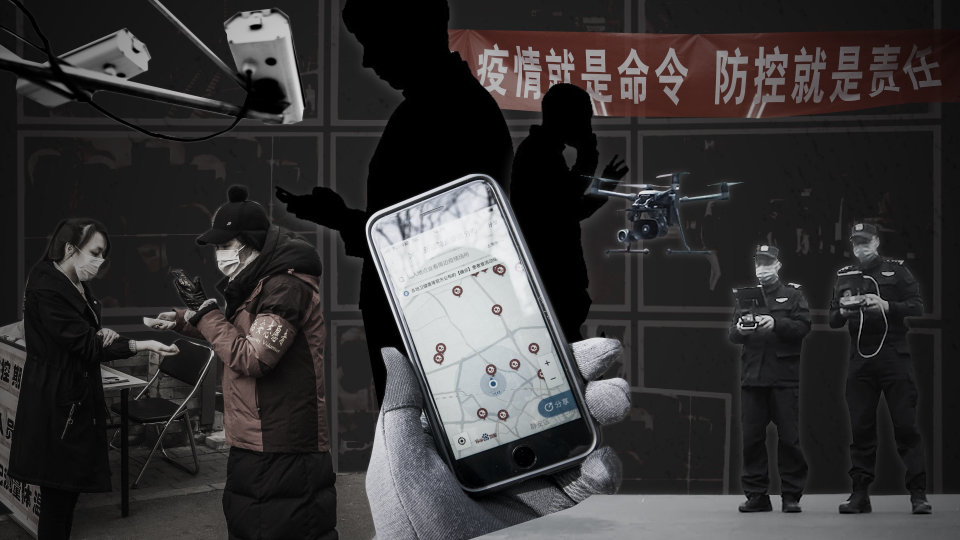
The Wuhan coronavirus outbreak has become a global calamity, leaving thousands dead, millions vulnerable, supply lines collapsed, economies derailed, factories shunted and cities under lockdown. It is an unanticipated disaster of epic proportions that has exposed human fragility in an interconnected world.
China, from where the novel virus originated, has been the worst hit. By mustering resources at its disposal and deploying the latest technology, the country has mitigated the spread to a significant extent and profiled people at risk.
During the time of the SARS (Severe Acute Respiratory Syndrome) outbreak in 2002, it took scientists more than a year to decode the genome of the virus, whereas thanks to tech advancements, the COVID-19 or the coronavirus genome was identified in a month’s time. These are the various ways through which China is waging war against this deadly strain.
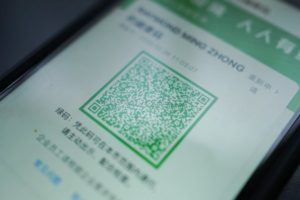
Utilizing its sophisticated and expansive surveillance network for the public good, the Chinese government joined hands with tech giants Alibaba and Tencent to develop a color-coded health rating system that is tracking millions of people daily.
The smartphone app was first deployed in Hangzhou with collaboration from Alibaba. It assigns three colors to people — green, yellow or red — on the basis of their travel and medical histories. In the industrial hub Shenzhen, similar software was created by Tencent.
Whether a person should be quarantined or allowed in public spaces is decided based on the color code. Citizens have to mandatorily log in to the app using pay wallet services like Alibaba’s Alipay, Ant’s wallet, etc. Only those people who have been given a green color code are allowed in public spheres after using the designated QR code at metro stations, offices, stations. There are checkpoints at most public places where the code and person’s body temperature is checked.
More than 200 Chinese cities are using this system, and soon it will be extended nationwide.
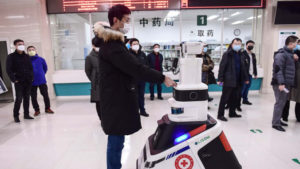
From preparing meals at hospitals, doubling up as waiters in restaurants, spraying disinfectants and cleaning, to vending rice and dispensing hand sanitizers, robots are on the frontlines everywhere to prevent the spread of coronavirus. In many hospitals, robots are also performing diagnosis and conducting thermal imaging.
Shenzhen based company Multicopter is using robots to transport medical samples.
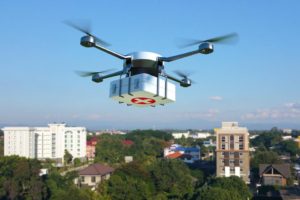
In some of the severely affected areas, drones have come to the rescue by transporting both medical equipment and patient samples. This is saving time, enhancing the speed of delivery and preventing the risk of samples being contaminated. Drones are also flying with QR code placards that can be scanned to register health information.
There are also agricultural drones that are spraying disinfectants in the countryside. Drones, powered with facial recognition, are also being used to broadcast warnings to the citizens to not step out of their homes and chide them for not wearing facemasks.
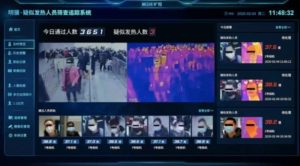
Access to public information has led to the creation of dashboards that are continuously monitoring the virus. A lot of organizations are developing dashboards using Big Data. Face recognition and infrared temperature detection techniques have been installed in all leading cities.
Chinese AI companies like SenseTime and Hanwang Technology have claimed to come up with a special facial recognition technology that can accurately recognize people even if they are masked. Smartphone apps are also being used to keep a tab on people’s movements and ascertain whether or not they have been in contact with an infected person.
Al Jazeera reported that the telecom company China Mobile sent text messages to state media agencies, informing them about the people who have been infected. The messages included all the details about the persons’ travel history.
CCTV cameras have also been installed at most locations to ensure that those who are quarantined don’t step out.

AI is playing a leading role in healthcare these days. With the help of data analytics and predictive models, medical professionals are able to understand more about a lot of diseases.
Baidu, the Chinese internet giant, has made its Lineatrfold algorithm available to teams that are fighting the outbreak, as per the MIT Technological Review. Unlike Ebola, HIV, and Influenza, COVID-19 has only a single strand RNA, so it is able to rapidly mutate. The algorithm is a lot faster than other algorithms that help predict the structure of a virus.
Baidu has also made tools to build effectively screen large populations. It has also built an AI-powered infrared system that can detect a change in a person’s body temperature. It is currently being used in Beijing’s Qinghe Railway Station to identify passengers who are potentially infected where it can examine up to 200 people in one minute without disrupting passenger flow, says the MIT Review.

At a time of severe crunch of healthcare professionals and the risk that people-to-people contact holds, autonomous vehicles are proving to be of great utility in delivering essential goods like medicines and foodstuffs. Apollo, which is Baidu’s autonomous vehicle platform, has joined hands with self-driving startup Neolix to deliver supplies and food to a big hospital in Beijing. Baidu Apollo has also made its micro-car kits and autonomous driving cloud services available for free to companies fighting the virus.
Idriverplus, a Chinese self-driving company that operates electric street cleaning vehicles, is also a part of the mission. The company’s flagship vehicles are being used to disinfect hospitals.